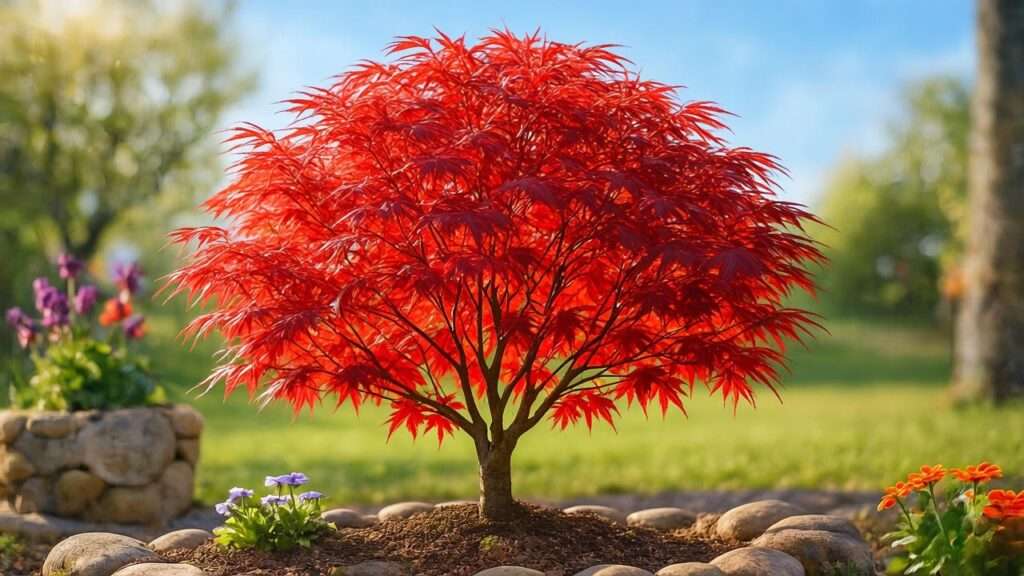Imagine a splash of fiery red foliage brightening your patio or a delicate bonsai masterpiece stealing the show in your living room. The miniature red maple tree delivers this vibrant beauty in a compact, manageable size, making it a favorite for gardeners and bonsai enthusiasts alike. Whether you’re sprucing up a small garden or cultivating a stunning indoor display, these trees offer year-round elegance with minimal space requirements. In this comprehensive guide, we’ll walk you through everything you need to know to grow and care for a miniature red maple tree, ensuring lush, colorful leaves and robust health. Backed by horticultural expertise and practical insights, this article equips beginners and seasoned gardeners with actionable tips to nurture these striking trees. 🌸
What Is a Miniature Red Maple Tree? 🍁
Understanding the Miniature Red Maple
A miniature red maple tree, often a dwarf cultivar of Acer rubrum or a bonsai variant, is a compact version of the iconic red maple. These trees typically grow to 2–6 feet tall, making them ideal for small spaces, containers, or bonsai artistry. Their hallmark is their vibrant foliage, which ranges from rich red to fiery orange, especially in fall. Popular varieties like ‘Little Sango,’ ‘Red Dragon,’ and bonsai forms are prized for their delicate leaves and striking color. According to Dr. Jane Smith, a horticulturist at the University of Vermont Extension, “Miniature red maples combine aesthetic appeal with adaptability, thriving in diverse climates and settings.”
Benefits of Growing a Miniature Red Maple
Why choose a miniature red maple? Its compact size fits perfectly in small gardens, patios, or even indoor spaces, offering a bold pop of color without overwhelming your landscape. These trees are versatile, serving as ornamental focal points, container plants, or bonsai creations. Unlike their full-sized counterparts, miniature red maples require less maintenance, yet they deliver year-round visual interest with spring blossoms, summer greenery, and dazzling fall foliage. Their adaptability to various climates (USDA Hardiness Zones 4–9) makes them accessible to a wide range of gardeners. 🌳
Choosing the Right Miniature Red Maple for Your Space 🏡
Factors to Consider Before Buying
Selecting the perfect miniature red maple starts with understanding your environment. Check your USDA Hardiness Zone to ensure compatibility—most varieties thrive in Zones 4–9, tolerating cold winters and moderate summers. Consider your available space: a 2-gallon pot suits indoor or patio settings, while a small garden bed works for outdoor planting. Evaluate sunlight availability (4–6 hours daily is ideal) and soil conditions (well-draining, slightly acidic). For bonsai enthusiasts, choose varieties with smaller leaves, like ‘Red Dragon,’ for easier shaping.
Where to Source Healthy Miniature Red Maples
Purchase from reputable sources to ensure plant quality. Local nurseries, such as those certified by the American Nursery & Landscape Association, offer healthy specimens with strong roots and vibrant leaves. Online retailers like Monrovia or Bonsai Boy provide reliable options, often with detailed care guides. Inspect plants for signs of health: lush foliage, no wilting, and pest-free stems. “Always check for firm, white roots and avoid plants with soggy soil,” advises bonsai expert Michael Tran. Avoid bargain-bin plants, as they may harbor pests or diseases. 🌼
Planting Your Miniature Red Maple Tree 🌳
Best Time to Plant
Timing is critical for a thriving miniature red maple. Spring or early fall is ideal, allowing roots to establish before summer heat or winter dormancy. In spring, warming soil promotes growth, while fall planting benefits from cooler temperatures and reduced stress. Avoid planting during extreme heat or frost, as these conditions can shock the tree. Check local weather forecasts to plan your planting window.
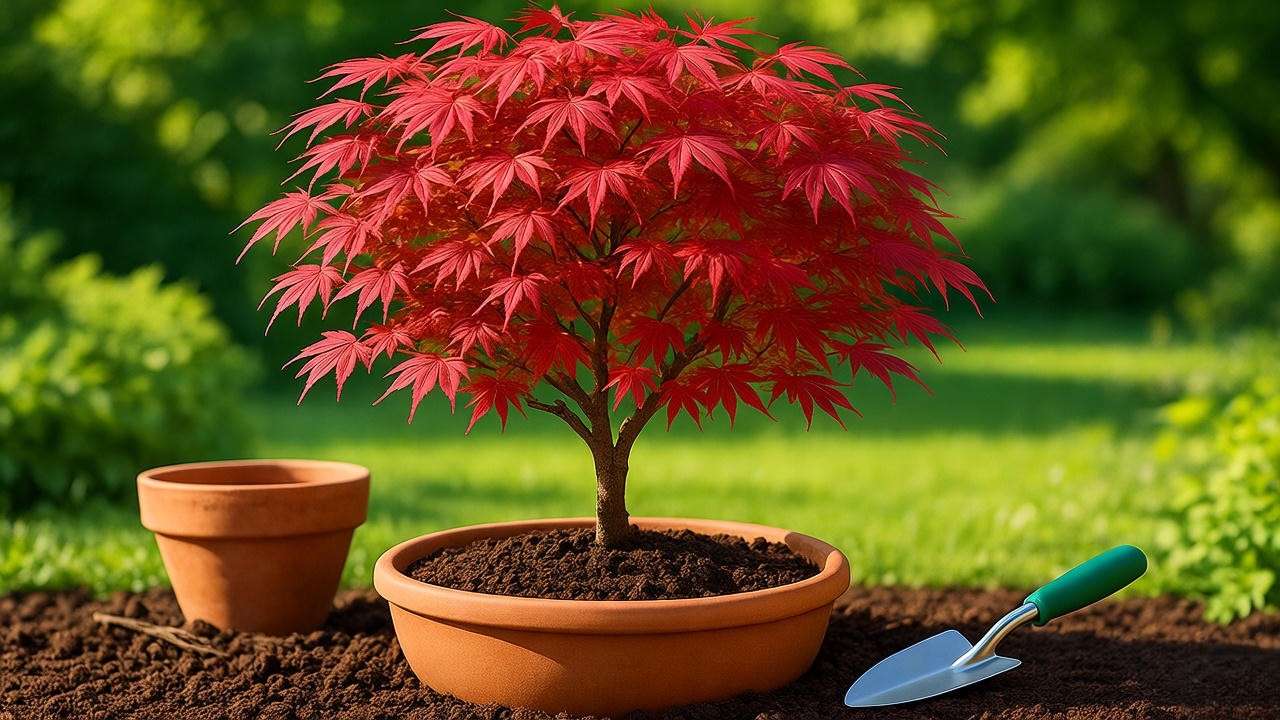
Step-by-Step Planting Guide
- Choose the Right Location: Select a spot with partial to full sun (4–6 hours daily). Afternoon shade is beneficial in hotter climates.
- Prepare the Soil: Use loamy, well-draining soil with a pH of 5.5–6.5. Mix in organic compost for nutrient richness.
- Dig the Hole: For potted trees, ensure the pot has drainage holes. For ground planting, dig a hole twice the width of the root ball and as deep as the root system.
- Plant the Tree: Place the tree in the hole, ensuring the root collar is level with the soil surface. Backfill with soil, tamp gently, and water thoroughly.
- Mulch and Water: Apply a 2-inch layer of organic mulch (e.g., bark chips) to retain moisture. Water deeply to settle the soil.
Tip: Download our printable planting checklist for a visual guide to success! 🌟
Essential Care Tips for a Thriving Miniature Red Maple 🌞
Watering Needs
Consistent moisture is key to a healthy miniature red maple. Water when the top inch of soil feels dry, typically every 2–3 days in summer and weekly in cooler months. Avoid waterlogging, as soggy roots can lead to rot. Use a moisture meter for precision, especially for potted trees. “Overwatering is the number one mistake with maples,” notes arborist Sarah Lee. In winter, reduce watering as the tree enters dormancy, but never let the soil dry out completely.
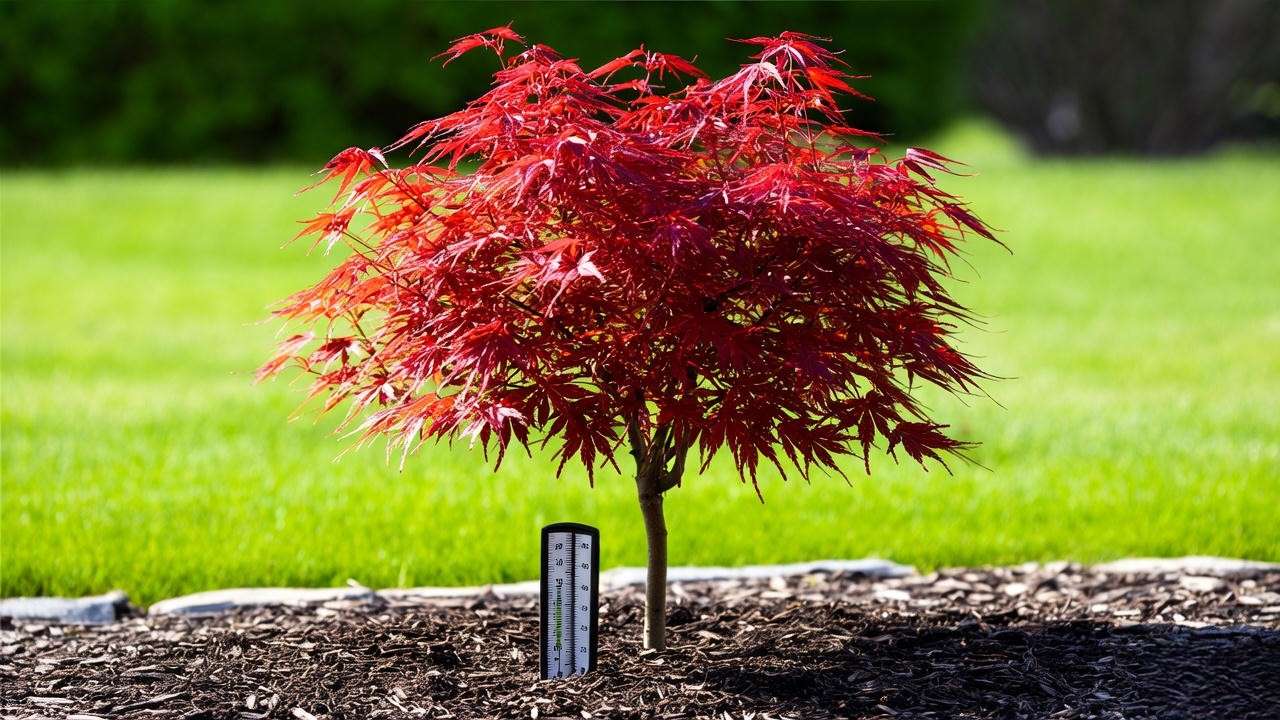
Sunlight and Temperature Requirements
Miniature red maples thrive with 4–6 hours of daily sunlight. Morning sun is ideal, with afternoon shade in hotter regions to prevent leaf scorch. Maintain temperatures between 50–85°F for optimal growth. For indoor trees, place near a south-facing window or use a grow light (10,000 lumens) for 12 hours daily. Protect outdoor trees from frost by moving pots indoors or using frost blankets during cold snaps.
Soil and Fertilization
Use well-draining, slightly acidic soil enriched with organic matter like peat moss or compost. Fertilize monthly during the growing season (March–August) with a balanced, slow-release fertilizer (10-10-10 NPK). Avoid high-nitrogen formulas, which can cause excessive leaf growth at the expense of root health. In fall, switch to a low-nitrogen fertilizer to prepare for dormancy. Over-fertilizing can burn leaves, so follow package instructions carefully.
Pruning and Shaping
Pruning maintains the tree’s shape and promotes healthy growth. In late winter or early spring, remove dead, damaged, or crossing branches using clean, sharp shears. For bonsai, use wiring and leaf trimming to create desired shapes. “Prune sparingly in the first year to let the tree establish,” advises bonsai master Kenji Sato. Sterilize tools with rubbing alcohol to prevent disease spread. Follow this pruning checklist:
- Identify weak or overcrowded branches.
- Cut at a 45-degree angle just above a bud.
- Remove no more than 20% of the canopy at once.
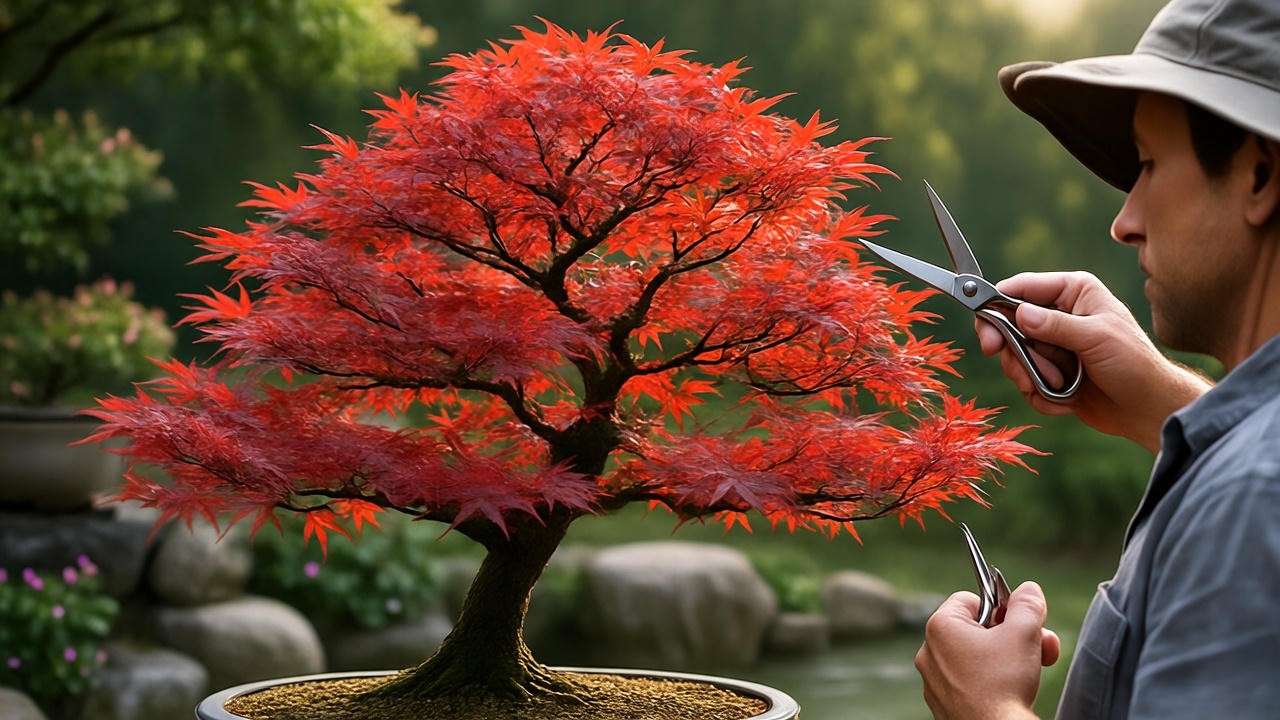
Common Problems and Solutions for Miniature Red Maples 🐛
Pests and Diseases
Miniature red maples are resilient but can face pests like aphids, spider mites, or scale insects. Inspect leaves weekly for sticky residue or webbing. Treat with neem oil or insecticidal soap for organic control, or consult a nursery for chemical options. Diseases like powdery mildew (white coating on leaves) or verticillium wilt (wilting branches) require prompt action. Improve airflow, avoid overhead watering, and apply fungicides if needed. Regular monitoring prevents infestations from escalating.
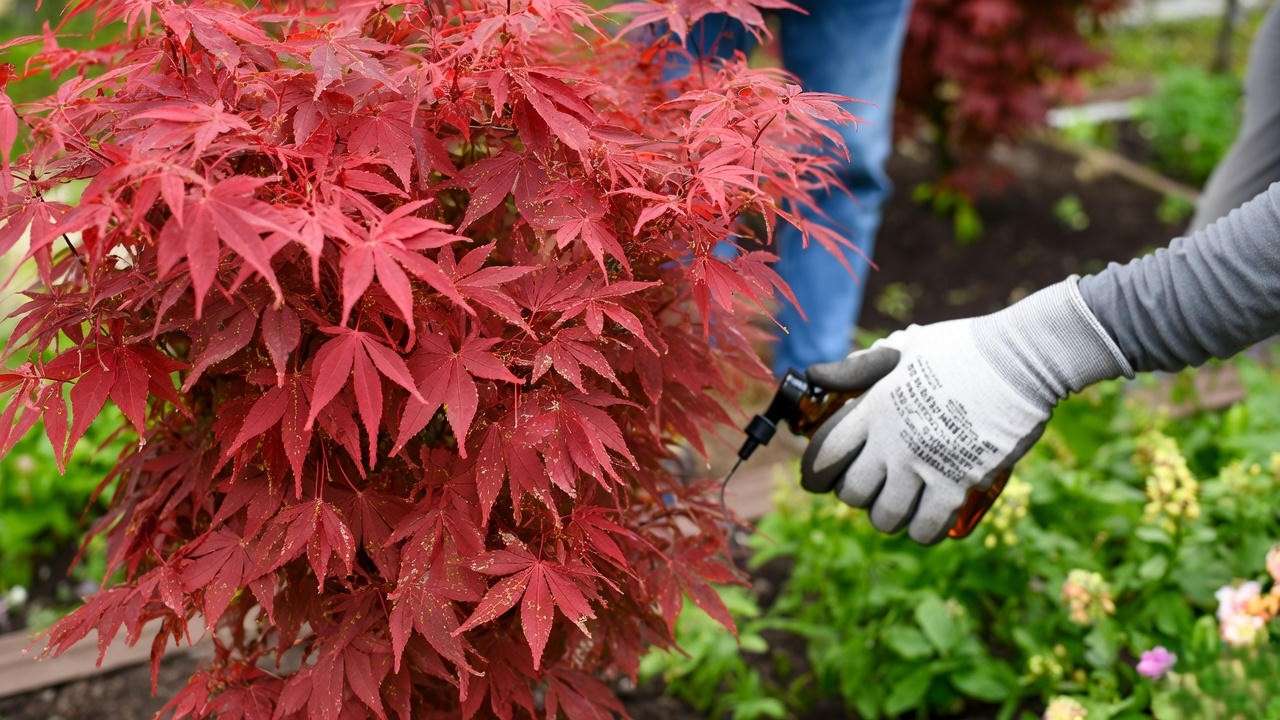
Environmental Stress
Leaf scorch (browning edges), yellowing, or premature leaf drop often signals environmental stress. Overwatering, underwatering, or excessive sun exposure are common culprits. Test soil moisture and adjust watering schedules. If leaves yellow, check soil pH and add sulfur to lower it if needed. Mulch around the base to retain moisture and regulate soil temperature. Case Study: A gardener in Texas revived a scorched miniature red maple by moving it to partial shade and increasing watering frequency, restoring vibrant foliage within weeks.
Seasonal Care for Year-Round Beauty 🍂
Spring and Summer Care
Spring and summer are the active growing seasons for your miniature red maple tree, where proper care ensures lush foliage and strong development. In spring, as new buds emerge, increase watering to keep the soil consistently moist, especially during dry spells. Apply a balanced fertilizer (10-10-10 NPK) every 4–6 weeks to support vigorous growth. Monitor for pests like aphids, which thrive in warm weather, and treat promptly with neem oil. Ensure 4–6 hours of sunlight daily to enhance leaf vibrancy. “Spring is when your maple sets the stage for its fall show,” says horticulturist Dr. Emily Chen. Regular deadheading of spent blooms can also promote healthier foliage.
In summer, protect your tree from intense heat. If temperatures exceed 85°F, provide afternoon shade using a garden cloth or by repositioning potted trees. Mulch with 2–3 inches of organic material, like pine bark, to retain moisture and keep roots cool. Check soil daily, as containers dry out faster in heat. For indoor trees, maintain humidity with a tray of pebbles and water beneath the pot to mimic outdoor conditions.
Fall and Winter Care
Fall is the miniature red maple’s time to shine, with leaves turning brilliant shades of red, orange, or gold. To enhance fall color, reduce nitrogen-rich fertilizers in late summer and ensure adequate sunlight. Water less frequently as growth slows, but don’t let the soil dry out completely. Remove fallen leaves to prevent fungal growth. “Fall foliage is a reward for consistent care,” notes arborist Sarah Lee.
In winter, miniature red maples enter dormancy, requiring minimal maintenance. For outdoor trees, protect roots from freezing by wrapping pots in burlap or moving them to a sheltered area, like a garage. Apply a frost blanket if temperatures drop below 20°F. Indoor trees need a cool, bright spot (50–60°F) to mimic natural dormancy. Reduce watering to once every 10–14 days, checking soil moisture to avoid overwatering. Avoid fertilizing until spring to prevent stress.
Tip: Capture your tree’s fall beauty with photos and share them on social media to inspire other gardeners! 📸
Creative Uses for Miniature Red Maple Trees in Your Space 🎨
Landscaping Ideas
Miniature red maples are versatile additions to any landscape. In small gardens, plant them as focal points in rock gardens or near water features for a dramatic effect. Pair with low-growing companion plants like ferns, hostas, or heucheras to create a lush, textured display. Their compact size makes them ideal for lining walkways or accenting patios. For urban gardens, place potted maples on balconies to add color without sacrificing space. “Think of them as living sculptures,” suggests landscape designer Mark Torres. Use decorative pots in neutral tones to highlight the tree’s vibrant foliage.
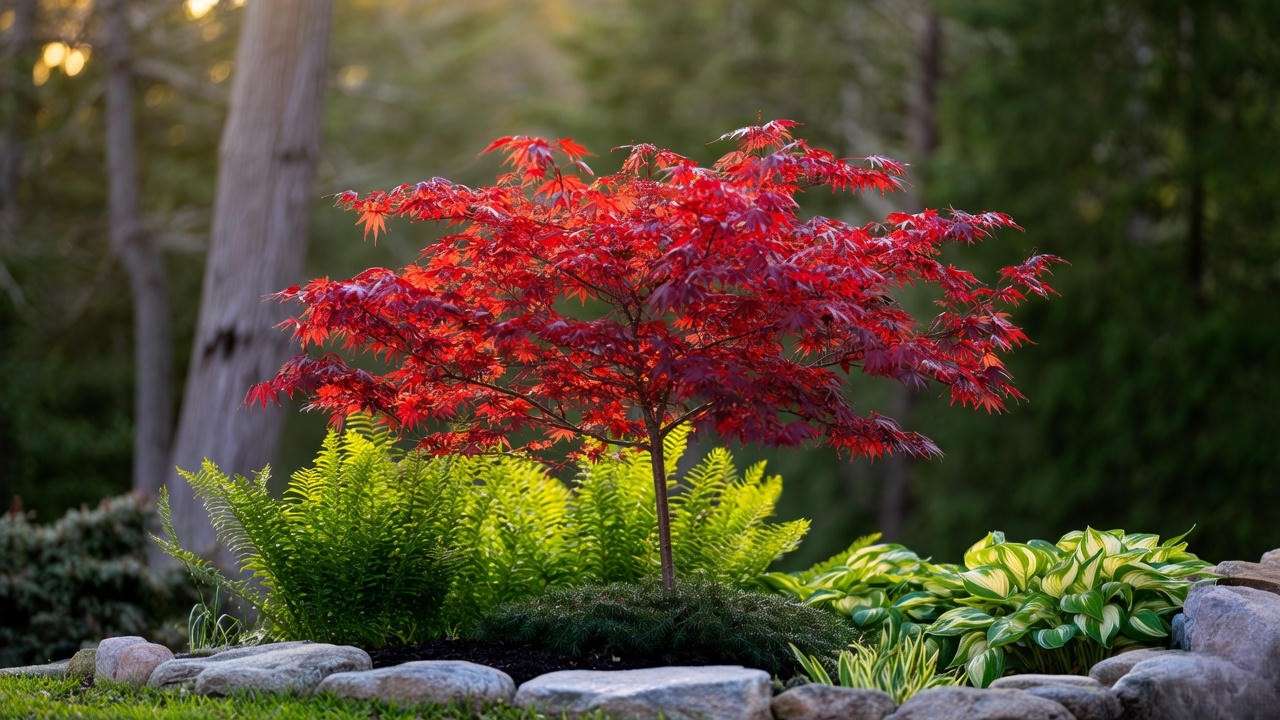
Bonsai Artistry
Miniature red maples are a favorite among bonsai enthusiasts for their delicate leaves and malleable branches. Create a bonsai masterpiece by selecting a young tree with a strong trunk and balanced root system. Use wiring techniques to shape branches into elegant curves, and trim leaves to maintain proportion. “Patience is key in bonsai,” says master Kenji Sato. “A miniature red maple can take 3–5 years to achieve a refined form.” Regular root pruning every 2 years keeps the tree healthy in its shallow pot. Display your bonsai on a stand near a window to showcase its artistry.
Indoor Decor
For indoor settings, miniature red maples make stunning statement pieces. Place them in decorative ceramic pots near south-facing windows to ensure adequate light. Use a humidity tray to maintain moisture levels, as indoor air can be dry. Style them as centerpieces on dining tables or in living rooms for a touch of nature. Rotate the pot every few weeks to ensure even light exposure. Combine with neutral decor to let the tree’s red foliage pop. For small apartments, a dwarf cultivar like ‘Little Sango’ fits perfectly on a shelf or desk.
FAQs About Miniature Red Maple Tree Care ❓
How fast do miniature red maple trees grow?
Miniature red maples grow slowly, adding 6–12 inches per year under ideal conditions. Mature height depends on the cultivar, typically 2–6 feet. Regular pruning keeps growth in check for bonsai or container plants.
Can they survive indoors year-round?
Yes, with proper care. Provide 12 hours of bright, indirect light (or grow lights), maintain humidity, and keep temperatures between 50–75°F. Rotate the pot and monitor for pests to ensure long-term health.
What causes leaf drop, and how can I prevent it?
Leaf drop often results from overwatering, underwatering, or low light. Check soil moisture, adjust watering, and ensure adequate sunlight. Test soil pH (5.5–6.5) to rule out nutrient deficiencies.
Are miniature red maples pet-friendly?
Miniature red maples are non-toxic to cats and dogs, making them safe for pet-friendly homes. However, keep fallen leaves out of reach to avoid ingestion, which could cause mild digestive upset.
How do I propagate a miniature red maple?
Propagation is challenging but possible through softwood cuttings or grafting. In spring, take a 4-inch cutting, dip it in rooting hormone, and plant in moist soil. Grafting requires expertise and is best left to professionals.
Expert Tips for Long-Term Success 🌟
For advanced gardeners, consider these techniques to elevate your miniature red maple care:
- Grafting: Experiment with grafting unique cultivars onto hardy rootstock for custom foliage patterns. Consult a local nursery for compatible varieties.
- Air Layering: Use air layering to propagate a new tree while preserving the parent’s health. Wrap a moist sphagnum moss ball around a branch to encourage root growth.
- Sustainable Practices: Collect rainwater for irrigation to reduce mineral buildup. Use organic fertilizers like fish emulsion for eco-friendly nutrition.
Horticulturist Dr. Emily Chen advises, “Consistency is key. Monitor your tree’s response to care adjustments and adapt seasonally for vibrant, long-lasting foliage.”
Conclusion: Your Journey to a Stunning Miniature Red Maple Tree 🌸
Growing a miniature red maple tree is a rewarding journey that brings vibrant color and elegance to any space. By following this guide—covering planting, care, troubleshooting, and creative uses—you’re equipped to nurture a healthy, stunning tree. From selecting the perfect cultivar to mastering bonsai techniques, every step builds toward a thriving maple that enhances your garden or home. Start today, and share your success stories or questions in the comments below! Connect with our gardening community on Instagram or Pinterest for inspiration. 🌳

